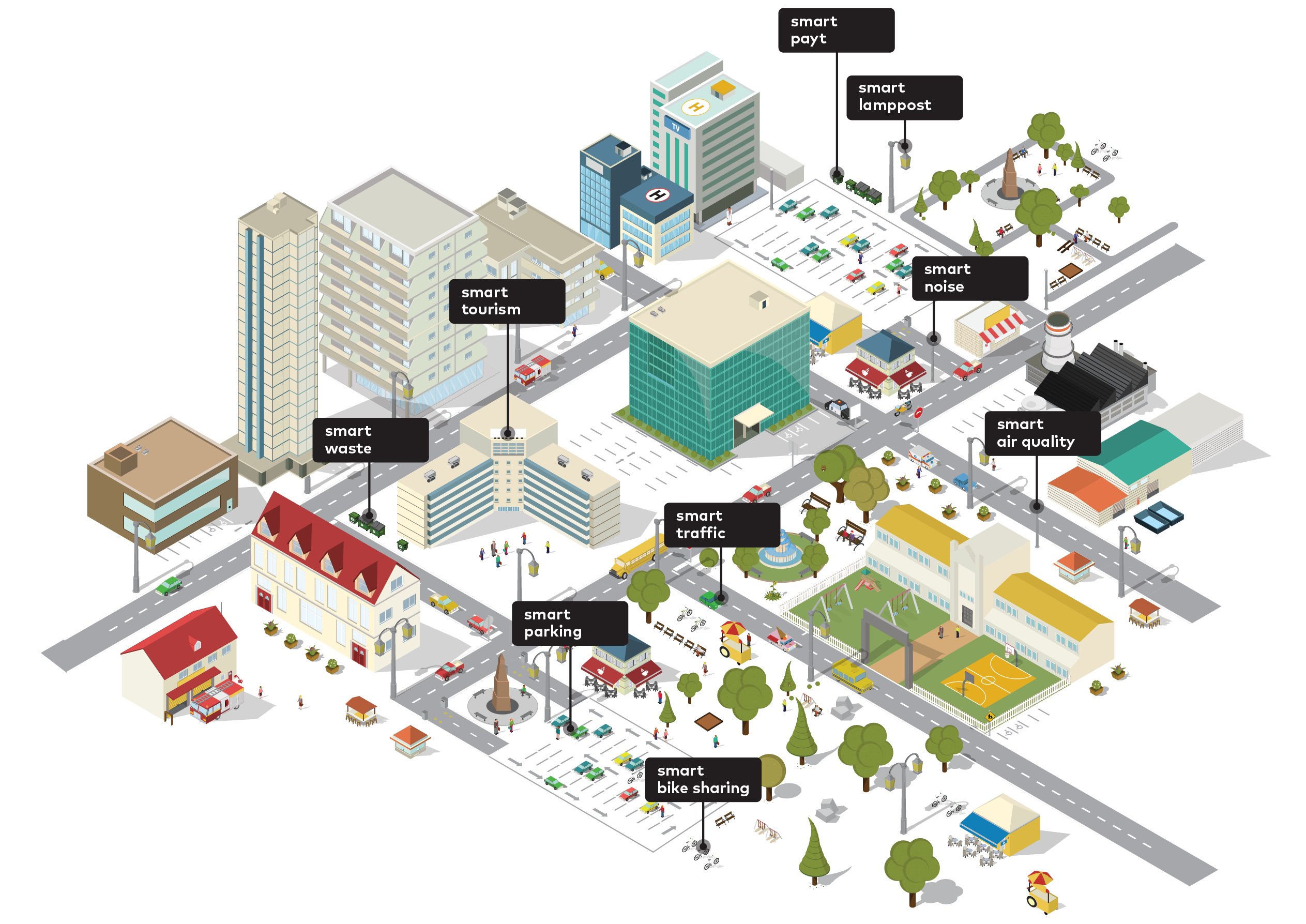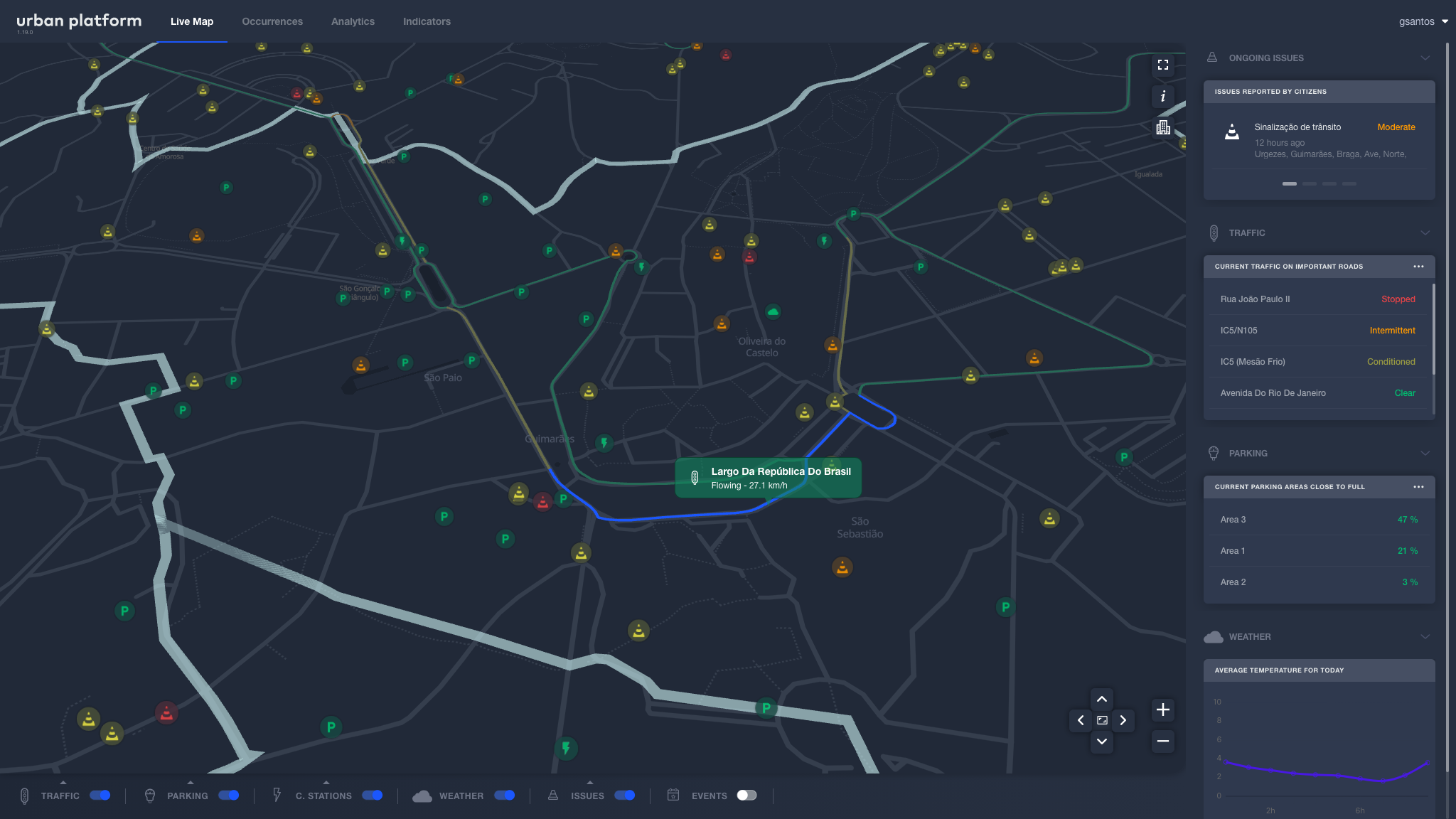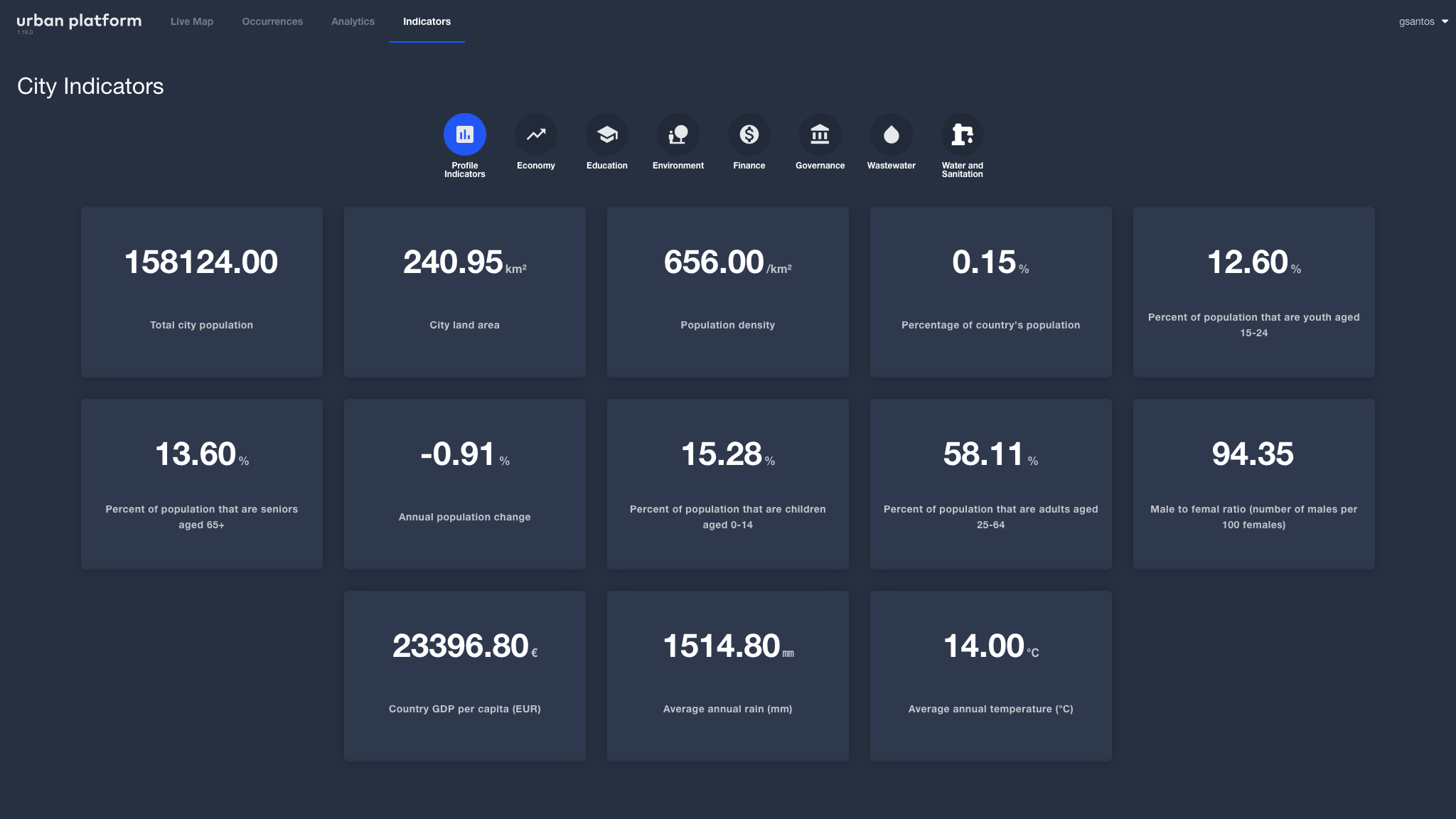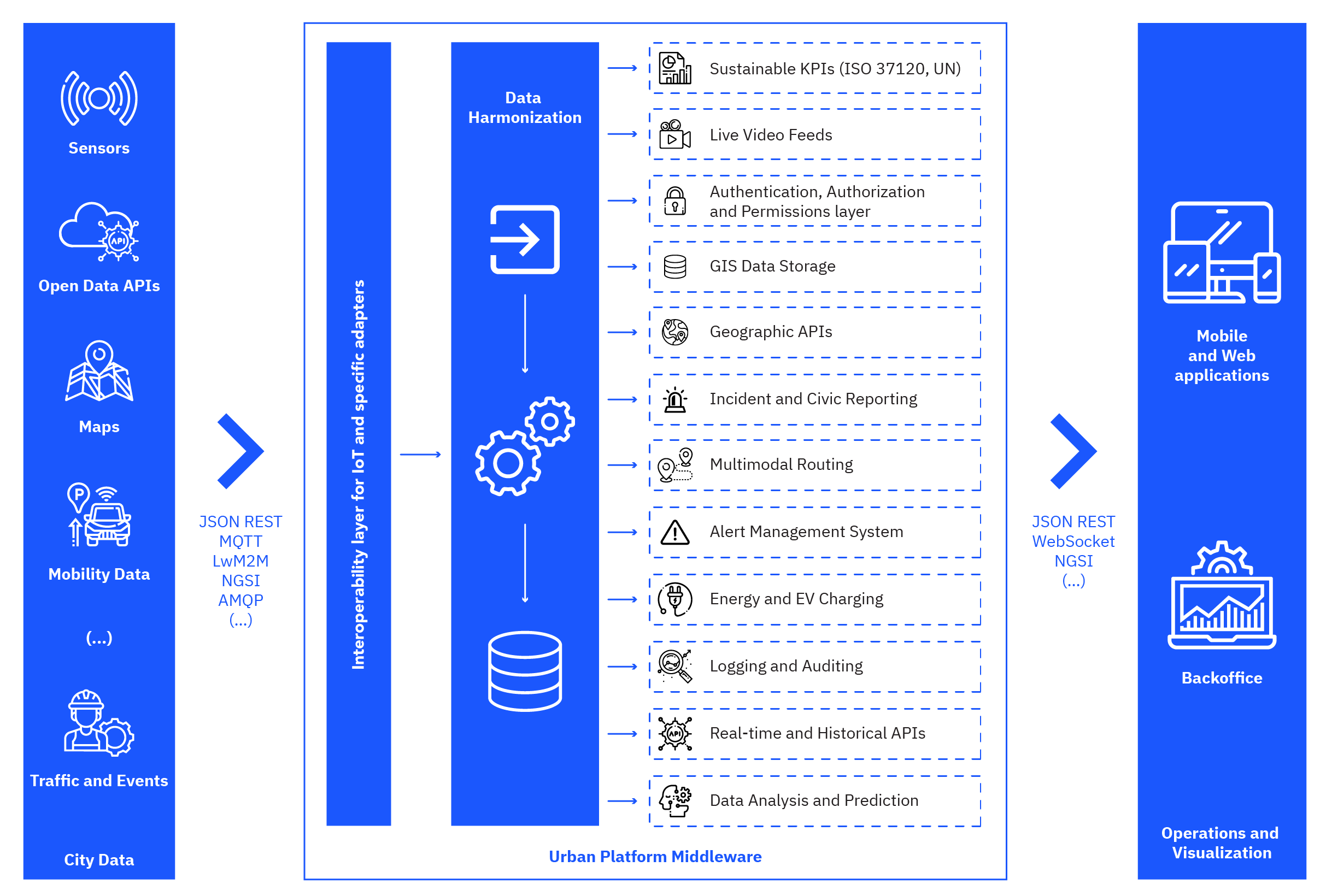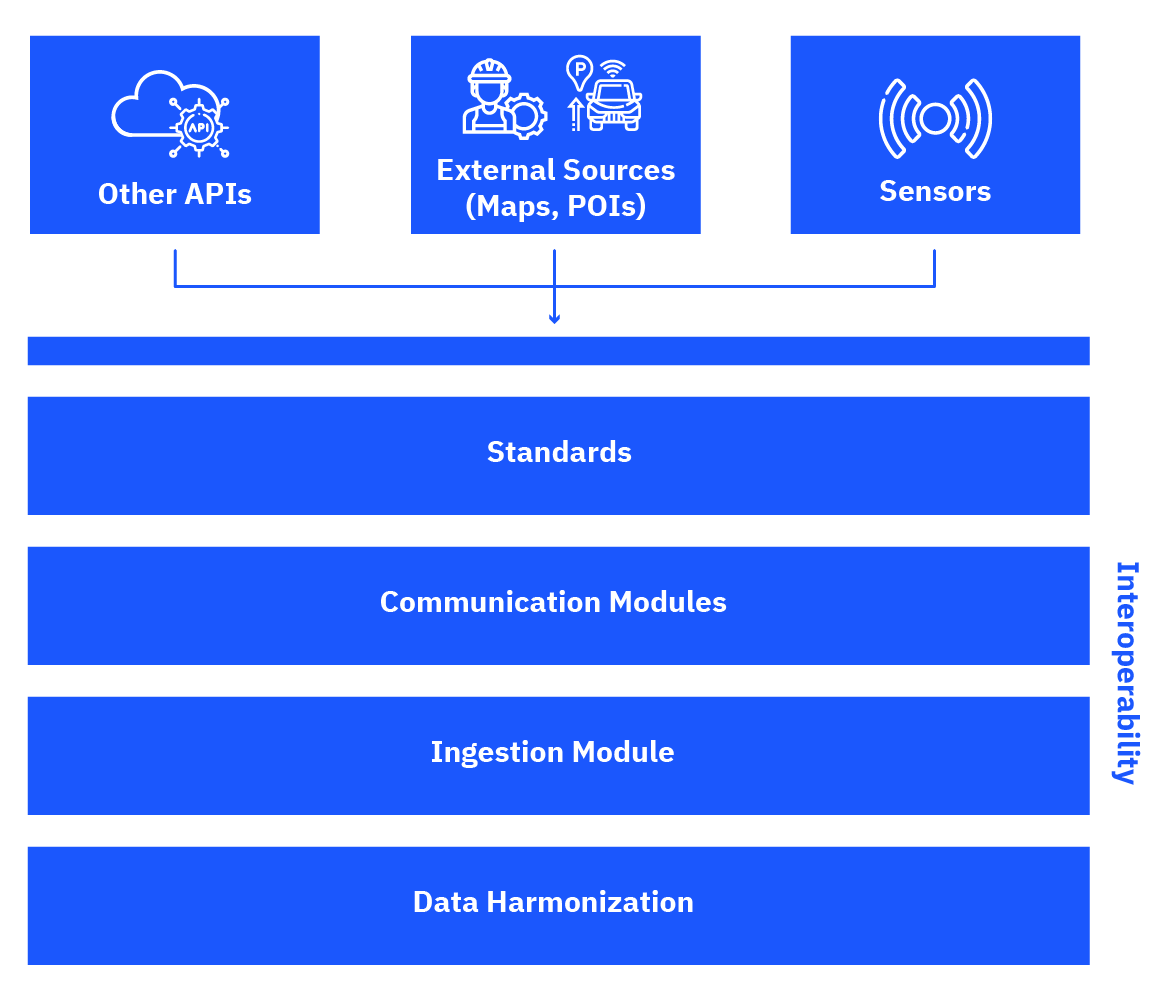Challenge & Context
People’s needs are continuously changing: technology, organisations, science, regions and people themselves are in constant evolution and, with them, new social, economic and environmental challenges keep emerging.
As cities are currently home to over half of the world’s population (a number still expected to increase), they must keep up with this evolution. Municipalities and cities need to ensure they can adequately address their population needs and challenges, while also offering them efficient means to lead a high quality pleasant life.
This growth represents an opportunity for technological innovation to come about and improve our lives. Ubiwhere, a high-tech company, based in Portugal and focused on the research and development of smart and sustainable technological solutions for Smart Cities, Telecom and Internet of Things, entered the market in 2012, aiming at providing city service providers, among others, with innovative technology to enhance their daily operations and processes. Ever since, Ubiwhere has been helping cities optimise their resource usage.
Together with two other Portuguese companies, dozens of experts in hardware and communication networks, Ubiwhere, created Citibrain. In 2014, Ubiwhere brought to the market a portfolio of innovative smart solutions, based on the Internet of Things (IoT), each one suited to address a sector pillar of a city, specifically focused on Mobility and Environment. With different sensors and pieces of equipment for each scenario, Citibrain offers Smart Traffic and Smart Parking solutions, as well as Smart Waste Management and Smart Air Quality solutions.
Citibrain was Ubiwhere’s first commercial step towards the proper establishment of Smart Cities. These vertical solutions collect urban data and thereby provide city management and other authorities with real-time information and metrics regarding mobility of people and goods, environmental factors such as air quality and noise, as well as people’s safety and quality of life.
Although Ubiwhere was successful in implementing its solution across several cities, such as Porto, Aveiro and Lisbon, the two co-founders of the company had a clear and distinct vision for a Smart Cities roadmap. For them, it did not make sense that a city had to manage each of its services or key sectors independently: city managers need to know if and when a specific metric (for instance, parking occupancy) is influencing or affecting other fields of interest (such as traffic congestion or air pollution).
Figure 1 . Can you imagine your city as a single integrated system?
Ubiwhere’s vision has always been to provide a single integrated system, capable of collecting information from a variety of sources and displaying it in intuitive and customisable dashboards. The main purpose was to provide decision-makers with valuable insights about their city’s progress and enable them to come up with efficient and coordinated responses.
To present this diverse information in a unified, integrated and understandable way, Ubiwhere needed to ensure interoperability of the most diverse data sources, an area in which FIWARE plays a vital role. Thanks to the Open Source element of FIWARE technology, diverse devices and platforms can communicate with each other, with data being openly available for use. Ubiwhere delivers open standards-based solutions (such as Smart Parking and Smart Air Quality) that are compliant with FIWARE.
Ever since, Ubiwhere kept evolving its expertise around FIWARE in the field of Smart Cities and has been a frequent partner of FIWARE in European-funded research projects such as SynchroniCity and SmartSDK. The company has also collaborated with leading organizations such as FIWARE Foundation and the Open and Agile Smart Cities (OASC) in the creation and promotion of reference software architectures and Minimal Interoperability Mechanisms (MIMs) for Smart Cities. At the 2018 Smart City Expo World Congress (SCEWC, Barcelona), the company launched “Urban Platform”, its flagship product for Smart Cities. The Urban Platform is meant to be the holistic view of a city to get effective insights based on cross-domain data processed in a unified way.
Solution
Ubiwhere has developed its Urban Platform with the ambition of providing cities with cloud services that enable location intelligence and deliver holistic views of a given city or region. It is an intuitive cloud platform catered to government authorities in municipalities that are actively looking to better equip their teams managing the city’s services and its inhabitants. The Urban Platform offers real-time analytics and web mapping tools, all based on cross-domain information and customisable dashboards. Among other benefits, it allows its end access to a global and integrated real-time view of the urban environment.
Figure 2 . Urban Platform real-time map of Guimarães
Ubiwhere’s solution assists cities in meeting the Sustainable Development Goals (SDGs), defined by the United Nations for 2030, by taking into account the Sustainable Cities and Communities Indicators from the international norms ISO 37120 and 37122, among other indicators.
Figure 3 . Urban Platform city and sustainability indicators of Guimarães
With these goals in mind and leveraging its interoperability features, the Urban Platform strongly enhances the digitisation path/vision of a given municipality. It can also be integrated with other existing systems, presenting itself as an aggregating solution for different areas of a Smart City (e.g. of mobility, environment, tourism, energy or waste). By automatically calculating standard KPIs, it helps to benchmark the city and assist in fulfilling these goals.
The Urban Platform is a cloud solution powered by data (open, public, and private), open standards and Open Source software.
How it works
The Urban Platform is a solution that gathers data from different types of sources. This data can come from sensors, other platforms and services (via APIs) or even directly from citizens (or communities), who provide feedback through mobile apps, surveys, and information systems.
Figure 4 . Urban Platform software architecture
These robust data aggregation and harmonisation capabilities provide many opportunities for both social media and real-time analytics. The application of intelligent methods, both in real-time and in batch, offer valuable insights for the whole value chain of cities, helping them to make more and better informed decisions.
Figure 5 . Urban Platform interoperability functionalities
It is vital to enabling multichannel communication tools, together with open standards for communication and data exchange. More and more cities are becoming aware of the limitations that come with the proprietary solutions in the market, that lock the information in “silos”. To that end, cities as well as governmental programmes are increasingly pushing for the use of open and standardised data formats and communication protocols, in order to be able to get the most value out of deployments and sustainable operations.
Ubiwhere, with these formats and standards, such as FIWARE’s NGSI and Smart Data Models, has been put to work when building the Urban Platform, giving it a real competitive advantage. Another important aspect comes with the advantage to make it easier for cities to increase greater transparency by making data openly available to citizens.
Another major advantage of the Urban Platform is its ability to perform cross-domain analysis. One practical example of this is the platform ability to understand how a large event (e.g. a popular music concert, sports event, parade) impacts traffic and parking in the surroundings of the event location and, additionally, how the generated traffic affects air quality and noise in those areas. Not only does this feature permit city administrators to access impact analysis before-hand but also help them to better predict and take the necessary precautionary actions should similar situations occur in the future. The platform provides two ways of running such analysis: 1) a more geospatial perspective on the city’s map and 2) a user-centric analytics tool in which end users can manage data visualisation to obtain the desired insights.
Cities are unique, and so are their data sources and data themselves. This can create significant challenges when such data does not comply with any of the open standards widely available. To tackle such cases, Ubiwhere has designed the Urban Platform’s system architecture to be as modular as possible, allowing a quick and easy integration of new datasets. For Ubiwhere, the greatest lessons learnt while working directly with cities in a co-creation approach, was the rapid adoption possible to their solutions and to specific use cases, hand-in-hand with the integration of some of these non-standard datasets into the Urban Platform in a very brief period.
Benefits & Impact
As the world’s population keeps growing, especially the percentage of people living in urban environments – currently cities use up to 80% of the world’s resources while occupying only 2% of the global territory – challenges come with that, such as the increasing difficulty to better plan and manage this fast urbanisation, the impacts of climate change on health and social systems, and even the increasingly higher stress levels of citizens. The Smart City approach, that Ubiwhere is following, is about providing people with the best technological and trustful solutions for their everyday lives; it is about involving multiple actors with different responsibilities and backgrounds and understanding individual needs while offering the best solutions to meet such demand. It is about sustainability, about ensuring that we all wake up to a better tomorrow.
With its cutting-edge technology, Ubiwhere’s solutions are now available in more than 55 cities around the world. Thanks to both solid R&I partnerships and synergies created over the years together with their customers, Ubiwhere has been consistently delivering towards consistent economic indicators and results.
In 2019, Ubiwhere achieved an annual turnover of 4 million euros, of which around 2,5 million euros came from commercial sales.
Added value through FIWARE
FIWARE has played a crucial role in Ubiwhere’s Smart City strategy since 2015, by delivering the standardisation layer that brings all Ubiwhere’s Smart Cities solutions and data sources together. Thanks to its Open Source components (such as the Context Broker), harmonised data models and open APIs, FIWARE allowed Ubiwhere to set up a sophisticated Smart City infrastructure, powered by open standards being interoperable at its core. It enables the creation of an unified and centralised platform for innovative city management, allowing Ubiwhere to scale its solutions and unlock data from different public service silos.
When Ubiwhere first heard about the Context Broker, the company realised that it provided the missing piece allowing them to effectively collect, consolidate and analyse data from different IoT devices, such as sensors, monitors and detectors. Currently, Ubiwhere leverages this piece of technology to create new innovative public services and to transform data into meaningful information for cities’ dashboards, helping them to transparently assess the effect of their public service policies on citizens’ life.
Operating in different business sectors has given Ubiwhere the right expertise and motivation to embrace challenging ideas and turn them into innovative solutions that spark the world’s imagination but, most importantly, have the potential to solve societies’ pressing issues. Today for instance, Ubiwhere can replicate any successful solution – which may have been initially developed for one specific municipality – in any aspiring Smart City, anywhere in the world. Together with the use of NGSI open standard and the Context Broker, Ubiwhere creates live ecosystems of data that are changing the way services are developed and consumed to achieve a smarter and more sustainable tomorrow.
The company has the innate desire to change the world, and hence why they have so far created, designed and developed solutions that aim at improving everyone’s lives combined with their strong beliefs. Simply said: the company believes in a sustainable world where people feel happier.
Next Steps
Ubiwhere’s vision is to become an international reference in both Smart Cities and in the interoperability field. Long-established collaborations with FIWARE Foundation, the Connecting Europe Facility (CEF), a key EU funding instrument to promote growth, jobs and competitiveness through targeted infrastructure investment at European level and ETSI – the European Telecommunications Standards Institute – are part of the strategy to reach such international recognition. Most importantly, the company aims to further join European funding initiatives and new partnership opportunities to share their expertise and also learn from existing findings and know-how in data orchestration, standardisation and interoperability, and apply such findings in many other contexts to provide authentic smart living environments.
The next targeted cities are Barcelona (Spain), Helsinki (Finland) and Portland (USA).
Ubiwhere is also leveraging its positive relationship with existing customers, like the city of Guimarães (Portugal) to promote successful results and develop the next steps in its roadmap. The aim is to make the Urban Platform fully Open-Source-based, by adopting NGSI-LD as the open standard for semantic interoperability and to create new intelligent and analytical features.
The company is currently adapting its solution to cater to different communities and sectors (hospital patients, operators at a factory, workers in construction sites or shopping settings, for instance) to improve quality of life and create a safer, more inclusive and sustainable world.

